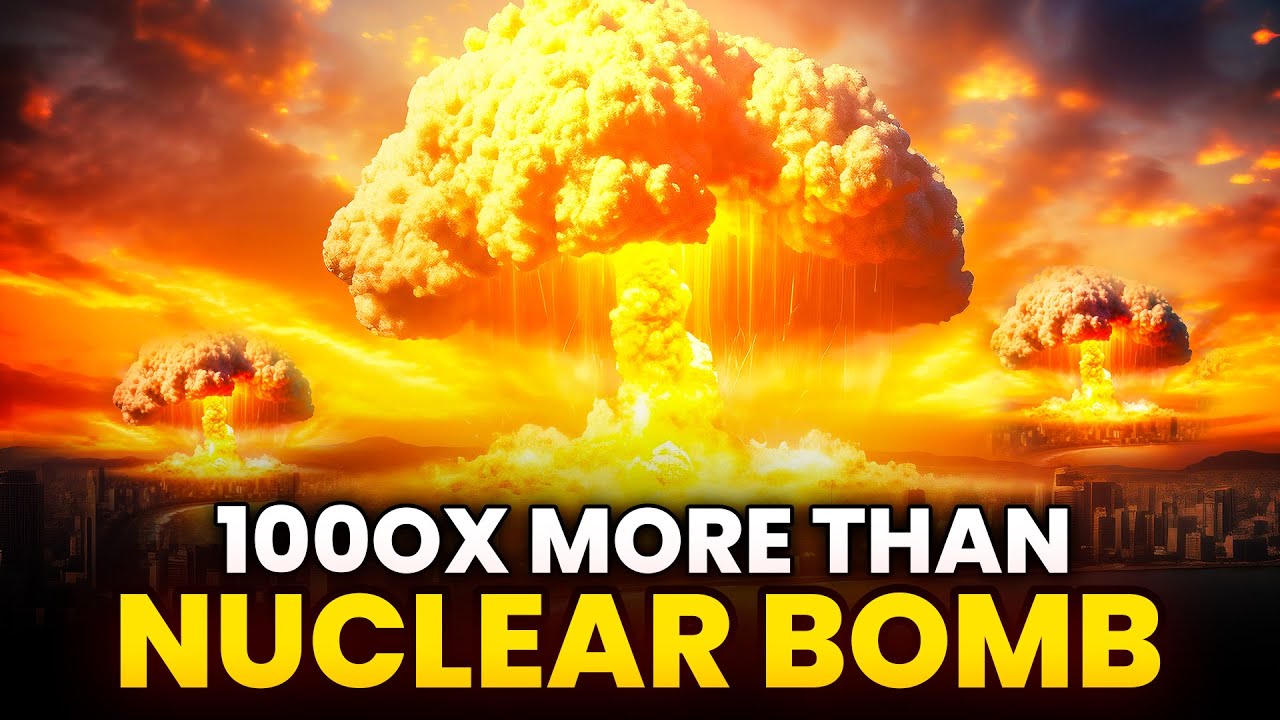
In “The Shocking Reality: Hydrogen Bombs Explained,” we confront a truth more harrowing than fiction: the unleashing of a force a thousand times more destructive than the atomic bomb dropped on Hiroshima. This isn’t just a chapter in history; it’s a stark reminder of humanity’s capacity to harness catastrophic power.
#historychannel #history #historybuff #historylovers #historygeek #historylesson #worldwar #historymuseum #historyphoto #historybooks #historyclass #historytour #historygram #historymade #historyplace #historic #facts #historymaker #fact #americanhistory #conspiracy #historyinthemaking #historytv #war #militaryhistory #military #worldwar #war #wwii #army #militarylife #soldier #warhistory #veterans #soldiers #reenactment #worldwartwo #worldwarii #militarylove #usarmy #militaryfamily #militaryaviation #tanks #militarystyle #veteran #historynerd #germany #militarywife #historybuff #tank #militarywomen
The Shocking Reality – Hydrogen Bombs Explained
The Shocking Reality Hydrogen Bombs Explained
The allure of history often lies in its ability to unravel the complexities of human ingenuity, particularly in the realm of warfare and its consequences. The development and deployment of the hydrogen bomb stand as stark reminders of this reality. In exploring the intricate narrative of the H-Bomb, we encounter a profound intersection of scientific breakthroughs and the darker aspects of human nature. This saga is not just about the technical evolution of weaponry but also about the geopolitical tensions and ethical dilemmas that have shaped the course of modern history. It paints a vivid picture of our relentless pursuit of power and the consequential patterns of conflict that have emerged as an aftermath of such endeavors.
The hydrogen bomb, a brainchild of the Cold War era, marked a pivotal moment in military technology. Collaborating with mathematician Stanisław Ulam, physicist Edward Teller developed the world’s first hydrogen bomb design in 1951. This breakthrough was a significant leap from the atomic bombs previously used, promising an exponentially greater destructive capacity. In 1952, the hydrogen bomb was successfully tested in the Pacific Ocean. This test, known as the “Mike Shot,” showcased a weapon 1,000 times more powerful than the uranium bomb dropped on Hiroshima in 1945. This marked the beginning of a new, more dangerous era in global politics and warfare.
The Unparalleled Power
The first detonation of the hydrogen bomb, the Mike Shot, in the Pacific Ocean was a stark display of the terrifying capabilities of nuclear technology. The sheer magnitude of its power, equivalent to the force of 1,000 Hiroshima bombs, demonstrated a level of destruction previously unimaginable. This test was not just a technological achievement but a moment that redefined the boundaries of warfare and global power dynamics. The realization that such immense destructive power could be wielded by humans altered the course of international relations and the nature of war.
The Hydrogen Bomb and Global Power
The hydrogen bomb’s development and subsequent proliferation significantly impacted the global balance of power. By the late 20th century, it was estimated that some 40,000 of these bombs were held by the world’s superpowers, a testament to the escalating arms race of the Cold War. This staggering number reflected not just a stockpiling of weapons but also a dangerous game of deterrence that shaped geopolitical tensions for decades. The existence of these weapons created a precarious balance, where the threat of mutual destruction was the disturbing foundation of international peace.
Decline and Deterrence
The 1990s witnessed a significant shift in the landscape of nuclear weaponry. Amidst evolving global dynamics and the end of the Cold War, there was a marked decline in the number and prominence of hydrogen bombs. This period saw efforts to reduce the nuclear stockpile and move towards more stable and less threatening forms of international relations. However, the legacy of the hydrogen bomb and its role in the doctrine of nuclear deterrence continued to influence global politics, underscoring the complex relationship between national security and the quest for peace.
A Tense Standoff and Nuclear Fears
One of the most significant moments in the history of the hydrogen bomb and its geopolitical impact was the Cuban Missile Crisis in 1962. This tense 13-day standoff between the United States and the Soviet Union over the deployment of nuclear missiles in Cuba brought the world perilously close to nuclear war. The crisis highlighted the extreme dangers posed by the hydrogen bomb and the hair-trigger nature of geopolitical tensions during the Cold War. It served as a chilling reminder of the potential consequences of the nuclear arms race and the need for cautious diplomacy in an era defined by the presence of these ultimate weapons.
See more great History Moments and Facts
https://www.youtube.com/@world_curiosity
#curiosity #oddities #curiosit #curiosities
How it was Made Stories and information
#H-Bomb #history #How it was made #War #War Interests #Weapons of War